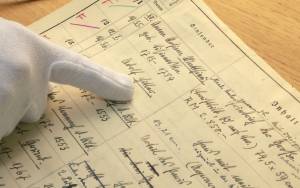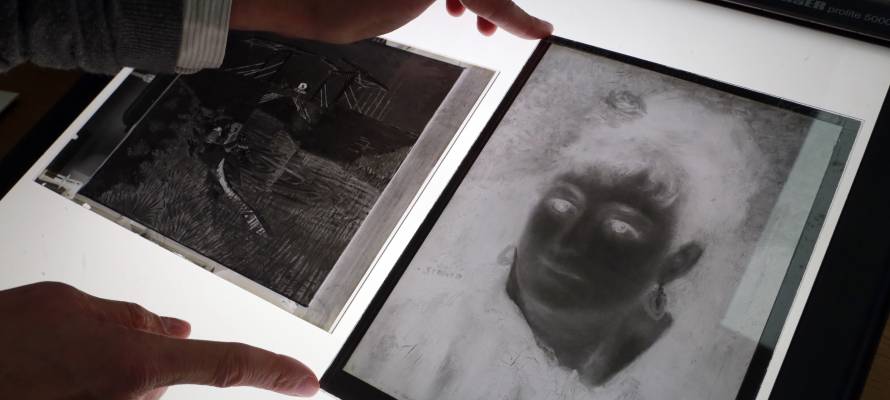
A French national archives employee points to the name Adolf Hitler on a ledger listing Goering’s looted art. (AP/Jacques Brinon)
France’s World War II archives have helped produce an unusual art book: a catalog of more than 1,000 paintings, tapestries and sculptures amassed by senior Nazi official Hermann Goering — many of them stolen from Jews deported to death camps.
It’s an effort to remind modern readers of Nazi crimes, as the number of Holocaust survivors dwindles and European far right groups are stirring up nationalist sentiment. The publication Wednesday of “The Goering Catalog” could also revive efforts to return artworks stolen by the Nazis to Jewish families.
“Artworks should never be quarry,” French Foreign Minister Laurent Fabius wrote in a preface to the new book. “They constitute a common good of humanity. This truth is timeless; the publication of this work is an occasion to remember it.”
A portrait by Goya and a landscape by Sisley are among 1,376 works by Italian, Dutch, French and German masters that adorned Goering’s home in Carinhall near Berlin.
It also includes Goering’s carefully maintained ledger, with handwritten comments about the quality of the work and notes from Nazi officials about where they were taken and when. The ledger was among documents seized by French forces from Germany at the end of the war, according to the French Foreign Ministry.
With guidance from art historians, Goering gathered a museum-worthy collection spanning leading genres of western European art. He repeatedly visited occupied Paris, a prominent global art market, during the war.
At the end of the war, some of the works were found by American troops, and the French government worked to recover artworks pillaged from France. Many works were restored to Jewish families, but others remain in government collections, their original owners never found.
Historian Jean-Marc Dreyfus, who compiled the catalog, is now resuscitating efforts to restore spoliated artworks to their owners.
Fabius described the collection as “an odious hunting trophy.”
By: Angela Charlton, AP
